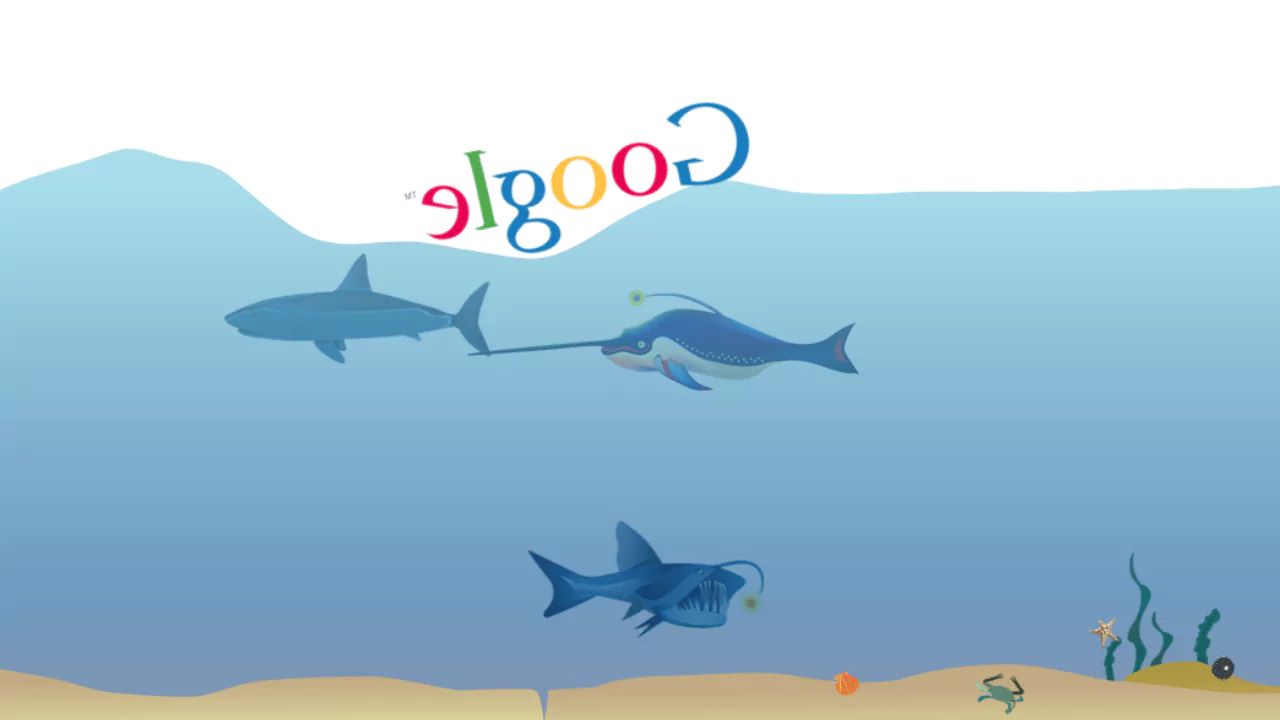Have you ever wondered what it would be like to explore the depths of the ocean with Google? Well, you are not alone. Google Underwater is a fun and interactive way to discover the wonders of the underwater world with a unique gravity effect.
In this article, we will tell you what Google Underwater is, how to access it, what Easter eggs you can find, and how it can help you learn more about marine life.
What is Google Underwater?
Google Underwater was launched on April Fool’s Day 2012. Its unique gravity effect lets players explore the undersea environment. Fish, seaweed, and sand move underneath the Google logo and search box, which float. You may create waves and bubbles by clicking or dragging items. Type a query and see the results float on the screen with aquatic animals.
History of Google Underwater
Google Underwater was created as part of Google’s tradition of making April Fool’s Day jokes. Every year, Google surprises its users with various pranks, jokes, and Easter eggs on its products and services. Some of the most popular ones include Google Gravity, Google Pac-Man, Google Snake Game, and Google Barrel Roll. Google Underwater was one of the jokes that Google launched in 2012, along with other ones like Gmail Tap, Really Advanced Search, and Chrome Multitask Mode.
How to access Google Underwater
Google Underwater is not available on the official Google website anymore, as it was removed after April Fool’s Day was over. However, you can still access it on external websites like Elgoog. To do so, you need to follow these steps:
- Go to Elgoog website.
- Click on the “Underwater” option on the menu bar.
- Enjoy the Google Underwater experience.
Google Underwater Easter Eggs
Google Underwater is not just a simple prank. It also contains some hidden features and Easter eggs that make it more fun and interesting. Here are some of them:
How to play Google Underwater Gravity?
Google Underwater Gravity is a variation of Google Underwater that adds more physics and realism to the elements. You can activate it by typing “Google Gravity” in the search box and hitting enter. This will make everything fall down to the bottom of the screen, including the logo, the search box, and the results. You can still interact with them by clicking or dragging them around.
Use of JavaScript in Google Underwater
Google Underwater is powered by JavaScript, a programming language that enables dynamic and interactive web pages. JavaScript is used to create the gravity effect, the animation of the elements, and the interaction with the user. You can see how JavaScript works in Google Underwater by opening your browser’s developer tools (usually by pressing F12 or Ctrl+Shift+I) and inspecting the source code.
Exploring the Underwater World
Google Underwater is not only a fun way to play with Google, but also a great way to learn more about the underwater world and its inhabitants. You can use Google Underwater to search for information about various marine creatures, such as sharks, dolphins, whales, turtles, octopuses, jellyfish, and more. You can also see some of them swimming around on your screen as you search.
Marine creatures found in Google Underwater
Some of the marine creatures that you can find in Google Underwater are:
- Clownfish: These are colorful fish that live in symbiosis with sea anemones. They are famous for their appearance in the movie Finding Nemo.
- Angelfish: These are brightly colored fish that have long fins and flat bodies. They are popular among aquarium enthusiasts.
- Sea turtle: These are reptiles that have hard shells and flippers. They are endangered due to human activities such as fishing, hunting, and pollution.
- Shark: These are cartilaginous fish that have sharp teeth and fins. They are often feared by humans, but they play an important role in maintaining the balance of marine ecosystems.
- Dolphin: These are mammals that have streamlined bodies and a long snout. They are intelligent and social animals that communicate with each other using sounds.
- Whale: These are mammals that have a large body and a blowhole. They are among the largest animals on Earth and can produce loud vocalizations.
- Octopus: These are mollusks that have eight arms and a soft body. They are highly adaptable and can change their color, shape, and texture.
- Jellyfish: These are cnidarians that have a gelatinous body and tentacles. They can sting their prey and predators using specialized cells called nematocysts.
Benefits of Google Underwater
Google Underwater is not only a source of entertainment but also a source of education. By using Google Underwater, you can:
- Learn more about the diversity and beauty of marine life.
- Appreciate the importance and value of the ocean and its resources.
- Understand the threats and challenges that the ocean faces due to human activities.
- Inspire yourself to take action and protect the ocean and its inhabitants.



